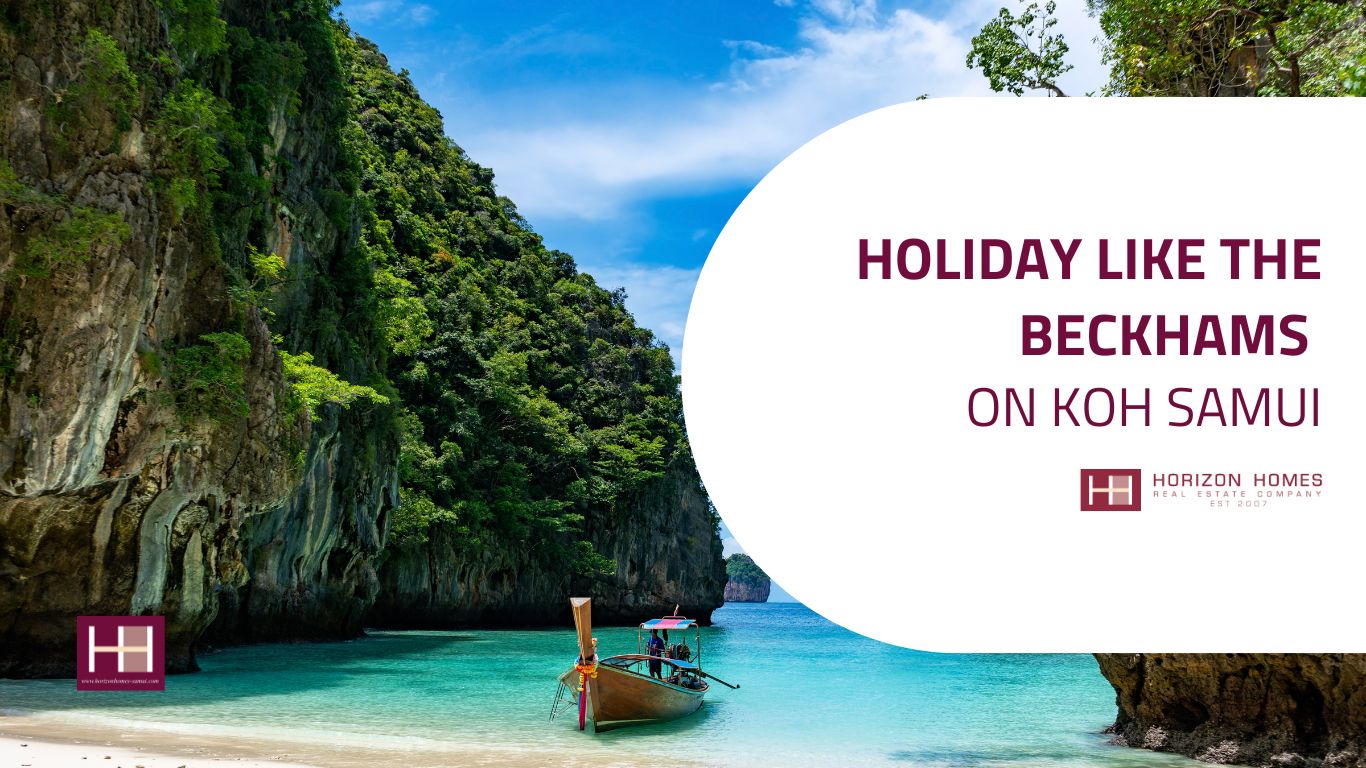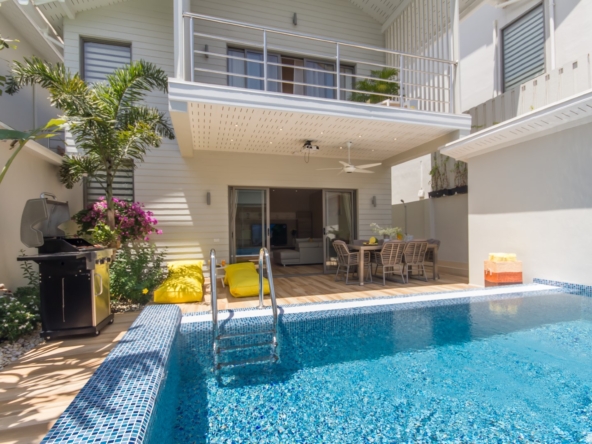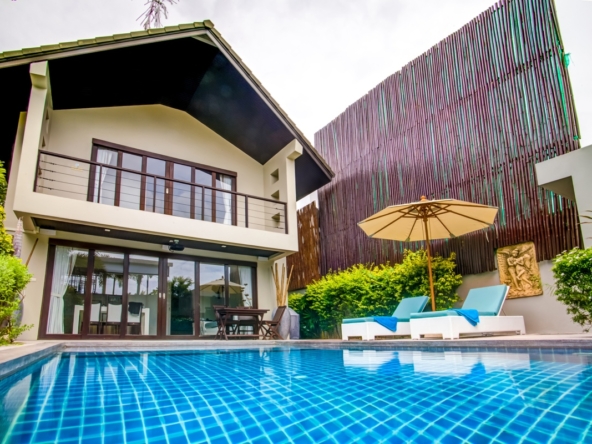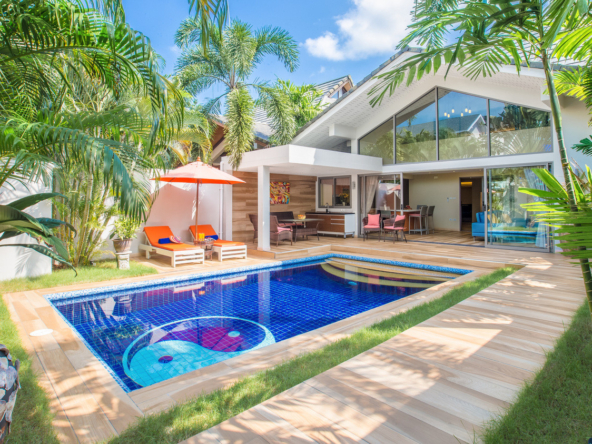European backpackers were the first to “discover” Koh Samui, but instead of flying to the island on a direct Bangkok Airways jet, the early adventurers arrived on a slow-moving ferry from Surat Thani on the mainland.
They were enthralled by the scattering of limestone islands on their way to Koh Samui’s first town, Na Thon, and its shoreline of sandy beaches and rocky headlands.
Shadowing the town were 500m peaks topped with rainforest, their slopes covered in coconut palms planted by Chinese settlers 100 years earlier. Such was the island’s natural appeal and the warm greetings of “sawadee” that many stayed longer than planned, hooked on the island’s seclusion and relaxed cultural charm.
Almost 40 years later, it’s not only backpackers singing the praises of this beautiful island in southern Thailand. Money is in town. David and Victoria Beckham have invested in a beachfront retreat, along with British singer Robbie Williams and Scandinavian football manager Sven-Goran Eriksson.
From its humble tourism beginnings in the early 1970s, Samui has matured into a hotspot for the rich and famous, leading to a sprouting of upmarket resorts, spas, and luxury villas to accompany the basic $20-a-night stays.
Luxurious Activities and Attractions: Experience Koh Samui Like a Celebrity
It is an island of contrasts. You can spend the day scouring for bargains in small, bustling shops along Lamai Beach, and the evening feasting on fresh seafood in the lavish surrounds of a five-star retreat such as Baan Taling Ngam Resort and Spa, on the island’s secluded west coast, a 30-minute drive away.
Under the veil of a mauve sunset, trawlers puff their way out to sea, their lights seen bobbing around in the distance as fishermen seek a haul for tomorrow’s dinner table. Basic but clean beachside bungalows continue to draw young adventurers, despite the construction of larger resorts.
Dining can be inexpensive as well. Plenty of Thai delicacies, such as spicy papaya salad with grilled chicken and sticky rice, are sold at roadside stalls, if you’re willing to try them.
Because of Samui’s appeal, an attractive international airport has opened to accompany the luxury low-rise retreats, many hidden beneath a canopy of palms.
The main tourist magnet is Chaweng Beach, a curved stretch of sand along the northeast coast. Hawkers prowl the beachfront selling everything from coconuts to inexpensive jewellery, their style of hawking far less intense than in the capital Bangkok.
Hire a motorcycle or join a guided tour to explore an island that has as many activities and tourist attractions as there are holiday bungalows along Chaweng, Lamai, Mae Nam, and Bo Phut.
We visit the giant Buddha statue, the crudely shaped rock formations at Hin Ta Hin Ya, a series of waterfalls, and a mummified, sunglasses-wearing monk seated in orange robes inside a glass capsule at one of the temples.
“He looks like a cross between the Dalai Lama and Ray Charles,” quips one visitor. With so many “unemployed” elephants on the island, a ride is almost mandatory, and a tip will help pay to feed and groom the gentle giants.
We marvel at the monkeys that climb the palms to loosen and drop coconuts. A morning boating adventure to Ang Thong Marine Park makes the day slip by quickly as we swim and snorkel among the marine life around some of the 42 small and large limestone islands that dot the tropical waters of the Gulf of Thailand.
Guides point out the unusual shapes of each island, likening them to turtles, whales, lions, and, in one case, a huge sphinx. Ang Thong, established as a marine park in 1980, means “bowl of gold,” something to treasure, though its coral is no match for the vivid colours of the Great Barrier Reef.
On one of the islands, Mae Ko, we climb steep stairs to a path that dips along a series of steps to a tranquil inland lake. The narrow path becomes congested as we make our way along, ducking and weaving to avoid hitting our heads on overhanging rocks.
Less than 15 years ago, the path was rarely visited, and a swim in the green waters of the talay nai (inner sea) was possible to cool off after the 15-minute walk. Today, swimming is prohibited, and the beach fronting the path has a jetty and shanty-kiosk. Ang Thong National Park isn’t the only boating destination worth exploring from Samui. Jet across to Koh Tao and swim and snorkel before reaching the island’s main town for a simple Thai lunch on the beachfront and a walk to explore the shops and bars.
A 20-minute boat trip away is a chain of three tiny islands, Nang Yuan, bridged by beautiful sandy beaches. It costs about $4 to enjoy a swim here, but it’s worth every baht. For many Europeans, it’s a popular scuba diving retreat. Accommodation is “free” for those who take a course.
About 10m offshore are deepwater coral reefs and marine life that, under sunlight, are easily seen in the stunning, transparent seas. The beaches are reached from the jetty by a 50m boardwalk — yet another magnet for smiling tourists.
Explore Homes Near the Beckhams
3 bed 3 bath Villa For Sale in Ban Tai – HS0804
- ฿15,200,000
- Beds: 3
- Baths 3
 yes
yes- Villa
3 bed 3 bath Villa For Sale in Ban Tai – HS0802
- ฿13,500,000
- Beds: 3
- Baths 3
 yes
yes- Villa
2 bed 2 bath Villa For Rent in Ban Tai – HV0076
- ฿8,640/per night
- Beds: 2
- Baths 2
 yes
yes- Villa





